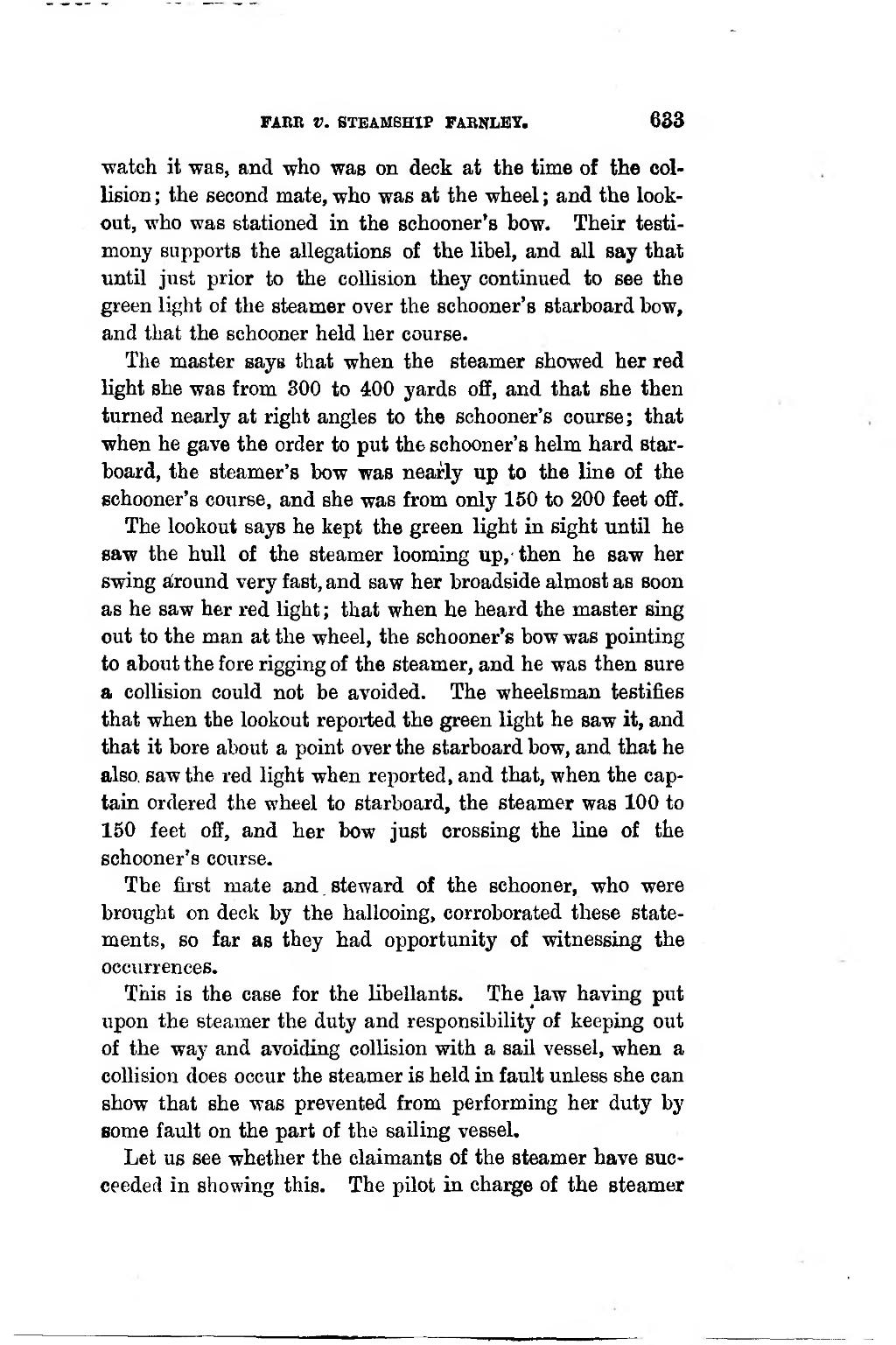FARR V. STSAMSHIP FABNLEY, 633 �•watch it was, and who was on deck at the time of the col- lision ; the second mate, who was at the wheel ; and the look- out, who was stationed in the schooner's bow. Their testi- mony supports the allegations of the libel, and ail say that until just prior to the collision they continued to see the green light of the steamer over the schooner's starboard bow, and that the schooner held lier course. �The master says that when the steamer showed her red light she was from 300 to 400 yards off, and that she then turned nearly at right angles to the schooner's course; that when he gave the order to put the schooner's helm hard star- board, the steamer's bow was nearly up to the Une of the schooner's course, and she was from only 150 to 200 feet off. �The lookout says he kept the green light in sight until he saw the huU of the steamer looming up, then he saw her swing àround very f ast, and saw her broadside almost as soon as he saw her red light ; that when he heard the master sing eut to the man at the wheel, the schooner's bow was pointing to about the fore rigging of the steamer, and he was then sure a collision could not be avoided. The wheelsman testifies that when the lookout reported the green light he saw it, and that it bore about a point over the starboard bow, and that he alsa saw the red light when reported, and that, when the cap- tain ordered the wheel to starboard, the steamer was 100 to 150 feet off, and her bow just erossing the Une of the schooner's course. �The first mate and steward of the schooner, who were brought on deck by the hallooing, corroborated these state- ments, so far as they had opportunity of witnessing the occurrences. �This is the case for the libellants. The law having put upon the steamer the duty and responsibility of keeping out of the way and avoiding collision with a sail vessel, when a collision does occur the steamer is held in fault unless she ean show that she was prevented from performing her duty by Bome fault on the part of the sailing vessel. �Let us see whether the claimants of the steamer bave suc- ceedecl in showing this. The pilot in charge of the steamer ��� �
